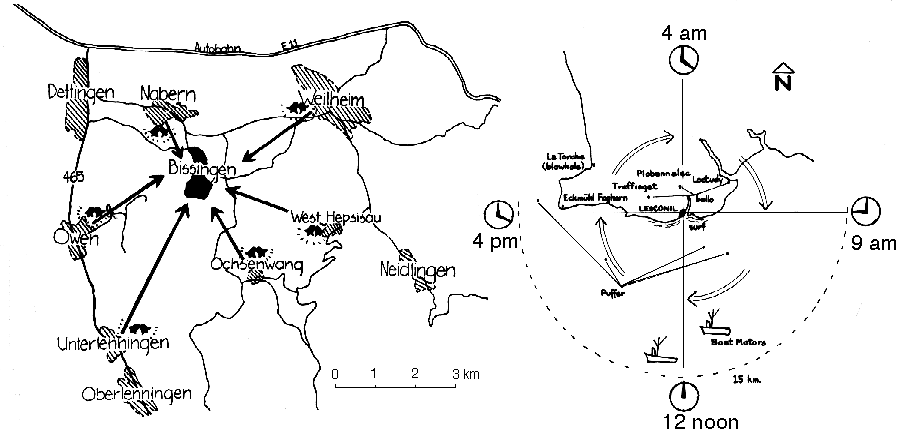The farthest distance in every direction from which sounds may be heard. Incoming sounds from distant sources define the outer limits over which acoustic communication may normally occur, and thus help to define the perceived geographical relationships between communities.
SOUND SIGNALs from one community, for instance, may penetrate others. The importance of their signalling function usually diminishes, but they also act as a reminder of the various ways in which the separate communities are related. In some communities, a change in the perceived acoustic horizon, such as when a certain bell or other distant sound is particularly noticeable, has a predictable meaning as a weather forecast.
Since the definition of an acoustic horizon depends on the perception of quiet sounds, it is highly susceptible to change by SOUND INTRUSIONs and other MASKing sounds. These reduce the distance of what can be heard, a characteristic shrinkage that runs parallel to that of the acoustic profile of sound signals with the rising AMBIENT NOISE of communities (see ACOUSTIC SPACE, LO-FI). Acoustic links between communities and parts of communities are now often replaced by ELECTROACOUSTIC and media links.
Compare the ACOUSTIC PROFILE and ISOBEL maps. See: SONOGRAPHY.

Incoming sounds heard in Bissingen, Germany and Lesconil, France. In Bissingen the sounds are those of church bells from neighbouring villages. In Lesconil, the sounds brought to the village changes throughout the day according to the solar wind pattern of offshore/onshore winds (from Five Village Soundscapes, no. 4, Music of the Environment Series, World Soundscape Project, 1977).
home